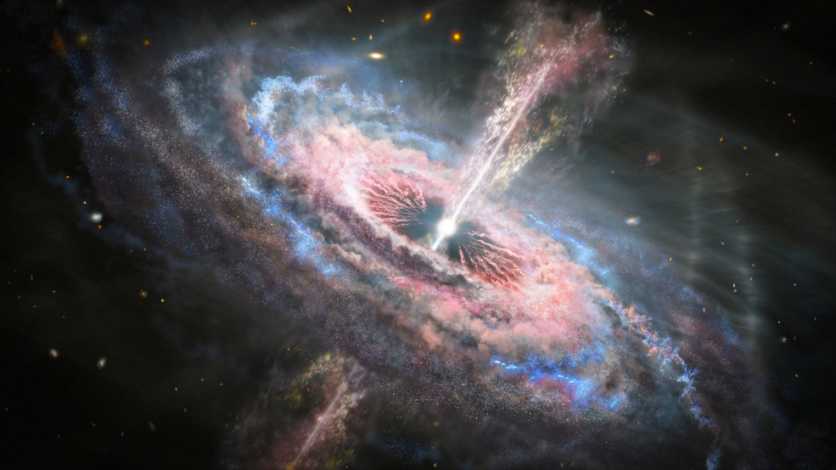Scientists have captured X-ray emissions from the most luminous quasar witnessed in the past 9 billion years of cosmic existence.
Known by its designation SMSS J114447.77-430859.3, or J1144, this observation provides valuable insights into the inner mechanisms of quasars and their interplay with the surrounding cosmos.

Outshining the Sun
Situated in a galaxy located a staggering 9.6 billion light years away and nestled between the Centaurus and Hydra constellations, J1144 outshines the sun by 100,000 billion times.
Compared to other quasars with similar radiance, J1144 resides considerably closer to Earth, affording astronomers a unique opportunity to delve into the mechanics of the quasar's black hole and its cosmic surroundings.
Leading the study are Dr. Elias Kammoun, a postdoctoral researcher at the Research Institute in Astrophysics and Planetology (IRAP), and Zsofi Igo, a Ph.D. candidate at the Max Planck Institute for Extraterrestrial Physics (MPE).
Quasars, among the most remote and brilliant objects known to humanity, derive their luminosity from the gravitational collapse of immense gas reservoirs into supermassive black holes.
These entities, classified as active galactic nuclei (AGN), emit copious amounts of electromagnetic radiation spanning radio, infrared, visible, ultraviolet, and X-ray wavelengths.
In 2022, the SkyMapper Southern Survey (SMSS) initially observed J1144 using visible wavelengths.
The research team combined data from various space-based observatories, including the eROSITA instrument on the SRG observatory, ESA's XMM-Newton observatory, NASA's NuSTAR, and NASA's Neil Gehrels Swift observatory, to investigate J1144.
By analyzing these observations, the team measured the X-ray temperature emitted by the quasar. Their findings revealed a temperature exceeding 350 million Kelvin, more than 60,000 times the sun's surface temperature.
Additionally, they determined that the black hole at the center of the quasar has a mass approximately 10 billion times that of the sun, with an accretion rate of about 100 solar masses per year.
Strikingly, the X-ray emissions from J1144 exhibited fluctuations occurring within mere days, a phenomenon seldom witnessed in quasars housing black holes of comparable magnitude. Typically, black holes of this size exhibit variations over months or even years.
Captivating Revelation
The observations also divulged a captivating revelation: while a fraction of the gas succumbs to the black hole's gravitational grip, other portions are expelled as immensely forceful winds, propelling substantial energy into the host galaxy.
Lead author Dr. Kammoun expresses astonishment, stating, "We were very surprised that no prior X-ray observatory has ever observed this source despite its extreme power."
He adds, "Similar quasars are usually found at much larger distances, so they appear much fainter, and we see them as they were when the Universe was only 2-3 billion years old. J1144 is a very rare source as it is so luminous and much closer to Earth (although still at a huge distance!), giving us a unique glimpse of what such powerful quasars look like."
According to Dr. Kammoun, an upcoming monitoring campaign is set to begin in June for this celestial object, holding the potential to unveil additional surprises from this exceptional source.
The study's findings were published in the Monthly Notices of the Royal Astronomical Society.
Related Article : NASA Hubble Telescope Spots Twin Quasars Hailing from Ancient Galaxies-Shares Initial Findings

ⓒ 2025 TECHTIMES.com All rights reserved. Do not reproduce without permission.




